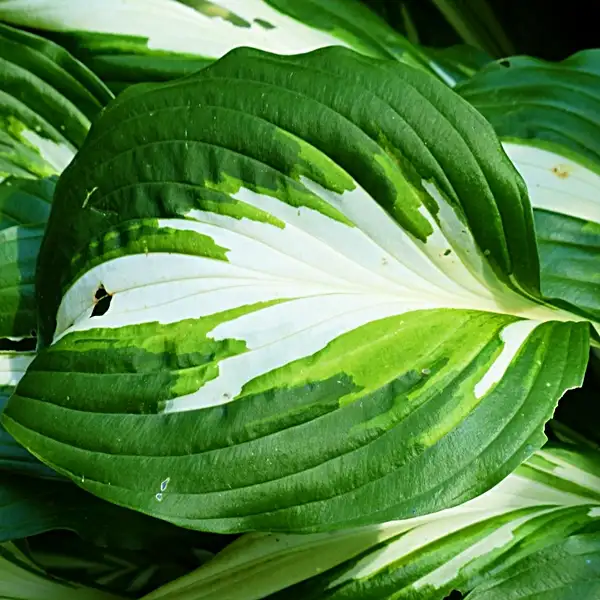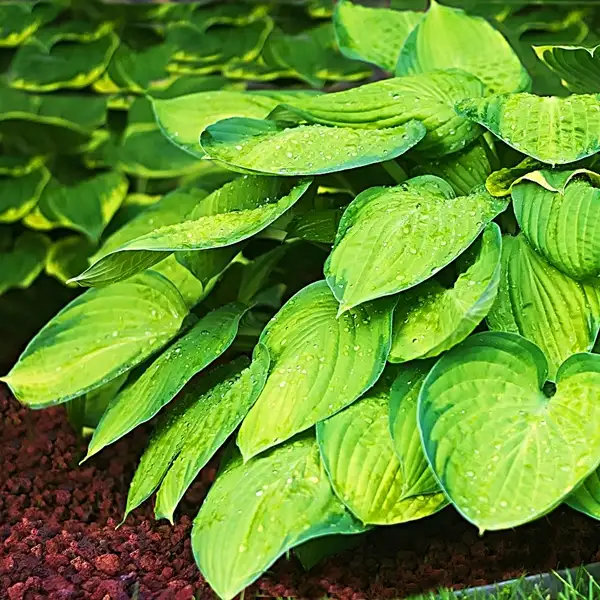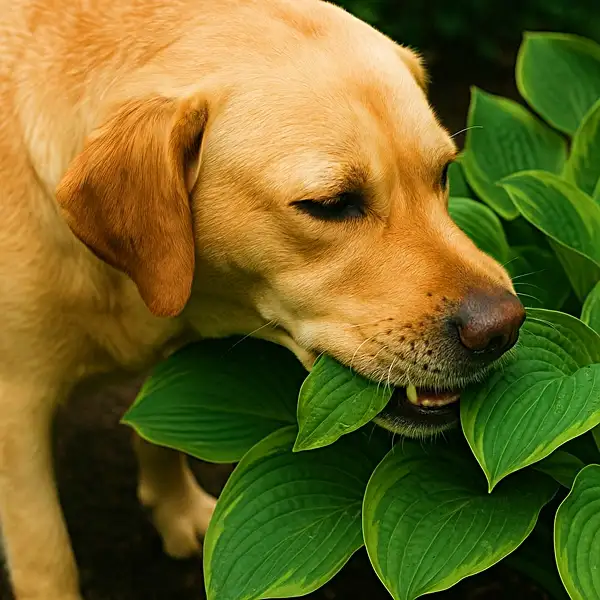Key Takeaways
| 🌿 Why This Article Is a Must-Read | |
|---|---|
| 1️⃣ | Discover a stunning shade-loving plant that thrives quietly in gardens worldwide. |
| 2️⃣ | Are hostas toxic to dogs? Uncover hidden danger this plant poses to our four-legged friends—especially curious dogs. |
| 3️⃣ | Learn how to recognize the early signs of trouble before it’s too late. |
| 4️⃣ | Find out exactly what to do in a pet emergency involving this plant. |
| 5️⃣ | Get rare insight into real veterinary treatments and what recovery actually looks like. |
| 6️⃣ | Use smart, proven tactics to keep your garden dog-safe without sacrificing beauty. |
Hostas – An Overview of this Popular Plant
Hostas (perennial plants) are an integral part of many garden landscapes due to their beautiful leaves & ability to thrive in shady areas.
They come with an immense variety ranging from minuscule varieties only a few inches tall, to large specimen plants with leaves that could span over two feet across. The foliage color could vary from gold to green & even blue tones, often variegated or patterned.

Reputed for their low maintenance appeal & aesthetics, hostas are particularly pragmatic for gardeners desiring a lush green look but reside in locations providing little or no sunlight exposure daily.
- Originally from Asia – Japan, Korea & northeast China specifically – these plants are now popular worldwide.
- Endowed with heart-shaped leaves, veined exquisitely along lines that extend deep into center at stem attachment point, hostas are capable of forming clumps that can extend several feet wide over time.
- Under favorable conditions, characterized by a minimum annual precipitation of about 400 millimeters, they can tolerate extreme cold temperatures as low as −40 °C (−40 °F). These plants can semi-naturally occur at high altitudes throughout China’s Liaoning province.
- As tall as their flower stalks may stand—reaching up to 6 feet vertically, depending on species – these plants tend not to flower very prominently, as they are often overshadowed by other landscape perennials in a typical backyard setting. This tendency tends to overshadow one important fact for dog owners globally: the toxicity of hostas to dogs!
Are Hostas Dangerous? Uncovering the Toxicity to Dogs

Hostas pose a danger when ingested by animals specifically dogs because they contain saponins – a chemical compound known for its harmful effects if consumed excessively.
- A licensed veterinarian at Penn Vet’s Ryan Hospital explained –
‘The fact is that while hostas are beautiful & lush foliage in many landscapes, they pose potential health concerns for pets, especially dogs. They contain a type of saponin that can cause vomiting & diarrhea.’
- According to the Pet Poison Helpline, it is rare for animals to die from ingesting hostas, but the discomfort caused by this plant’s toxicity can be severe, depending on amount consumed.
- Puppies or younger dogs who do not yet know better might be more susceptible due to their smaller body mass compared to older dogs – which means we should keep an extra watchful eye on them!
But what symptoms should we be looking out for exactly?
10 Alarming Signs of Hosta Poisoning in Dogs: What To Look For

The signs of Hosta poisoning in dogs are not immediate & may take several hours to appear after ingestion. The most common signs include –
| Symptom | What It Means |
|---|---|
| Vomiting 🤮 |
|
| Diarrhea |
|
| Loss of Appetite |
|
| Fever |
|
| Abdominal Pain |
|
| Excessive Drooling |
|
| Wobbly Gait |
|
| Muscle Tremors |
|
| Behavior Changes |
|
| Serious/Fatal Outcomes |
|
Prompt action is essential if you suspect ingestion has occurred early, to prevent further complications & ensure a quicker recovery. Seriousness of this matter cannot be overstated, even if only small amounts were consumed.
5 Immediate Actions If Your Dog Ingests Hostas
| What To Do | Why It Matters |
|---|---|
| Stay Calm 😌 |
|
| Remove Plant Material |
|
| Call a Vet or Poison Control |
|
| Don’t Induce Vomiting |
|
| Monitor Symptoms |
|
Note: You can contact Pet Poison Helpline or ASPCA Animal Poison Control anytime.
7 Hosta Toxicity Treatments for Dogs: Veterinary Interventions
Upon arrival at vet, depending on severity of dog’s condition & symptoms presented during initial examination, they start the treatment for hosta poisoning in dogs –
| Treatment | Purpose & Use |
|---|---|
| Stomach Pump (Gastric Lavage) |
|
| Activated Charcoal |
|
| IV Fluid Therapy 💧 |
|
| Anti-Nausea Meds |
|
| Antidiarrheals |
|
| Monitoring & Temperature Control |
|
Heat Stroke in Dogs (+Treatment)
Hyperthermia – essentially heat stroke – is another significant aspect of treatment in hosta overdose cases. According to Dr. Douglass Macintire, published on DVM360 –
“By applying ice packs to belly & head regions while simultaneously monitoring the rectal temperature, we can bring it back to normal ranges in a controlled environment!”
Preventing Contact: 5 Pro Tips for Keeping Your Dog Safe From Toxic Plants
Ultimately, prevention is key to protecting dogs from exposure to toxic plants such as Hostas.
| Prevention Tip | Why It Helps |
|---|---|
| Train Your Dog 🐕 |
|
| Designate Dog-Safe Areas |
|
| Remove or Relocate Hostas |
|
| Use Pet-Safe Alternatives |
|
| Educate Household & Guests |
|
This ensures better supervised interaction when pets are around, ultimately supporting a longer & healthier life by our side as caring & appreciative owners.
Frequently Asked Questions
What happens if a dog eats a hosta leaf?
Saponins in hosta leaves upset a dog’s stomach. They trigger the digestive system & cause vomiting, diarrhea, drooling, disorientation or muscle tremors. In large amounts or with small dogs, it may become life-threatening.
How do I stop my dog from eating hostas?
Train your dog to avoid plants, use fences to block access & relocate hostas to out-of-reach areas. Supervise them outdoors to prevent unsupervised nibbling.
How poisonous are hostas?
They are moderately dangerous. While not usually fatal, symptoms can be severe & require urgent vet care if a large amount is consumed.
Why are dogs attracted to hostas?
Dogs explore with their mouths. Hostas’ large, textured leaves & garden placement make them tempting targets - especially for curious or bored pets.
What plant is poisonous to dogs?
Lilies, sago palms, oleander, azaleas & daffodils are all poisonous to dogs. Always check plant safety before adding them to pet-accessible areas.



